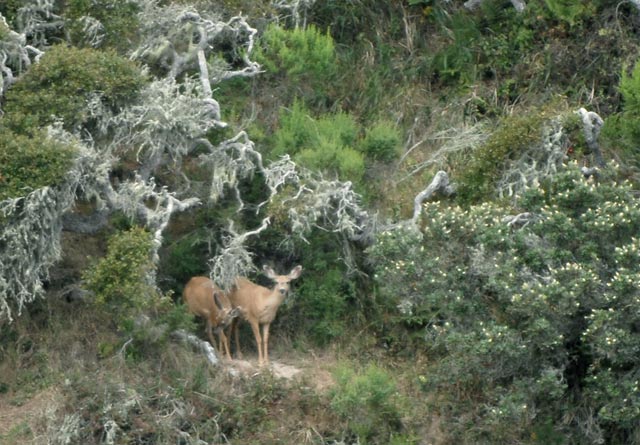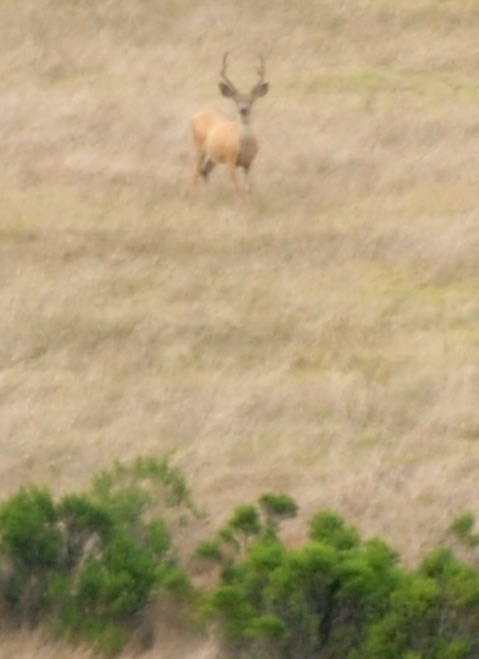Pro Hunters Hit Santa Rosa Island
Helicopters Used to Remove Remaining Elk and Mule Deer from Channel Island

The final push to eradicate all of the Kaibab elk and mule deer that were brought as game animals to Santa Rosa Island a century ago began on Thursday, as professional hunters in helicopters started buzzing the island on the lookout for the individuals that managed to survive the past few weeks of commercial hunting. The effort is being coordinated by the National Park Service (NPS), which purchased the island from the Vail & Vickers cattle ranching company in 1986, but it’s based on the terms of a legal settlement signed in 1998 by the NPS, V&V, and the National Parks Conservation Association (NPCA).
“This period is the end of a 25-year transition from the time the island was sold to the National Park Service,” said Yvonne Menard, spokesperson for the Channel Islands National Park. “And that 25-year transition is really a transition from the 100-year history of ranching on the island to its use as a national park.” She explained that, once the animals are removed and the current island closure ends at the start of 2012, the entire island will be open to the public year-round. In years past, about half of the island was closed off about half of the year so that private hunters — who paid the former owners a premium for the opportunity — could track down the elk and deer and take their meat and trophies home. Additionally, the large, nonnative species are considered a threat to smaller native island species of animals and particularly plants, a problem that would have been exacerbated by a population explosion if the animals were allowed to stay but the annual hunts were to stop.
“In fulfilling the terms of a settlement agreement signed over a decade ago, the National Park Service is finally putting an end to the cycle of deer and elk killing that has existed on Santa Rosa Island for a century,” said Brian Segee of the Environmental Defense Center, which represented the NPCA in the late ’90s lawsuit. “For too long, the island has been managed as a lucrative private game farm, and we cannot wait for Santa Rosa to finally truly be a part of Channel Islands National Park, open to the public and protective of its incredible biological diversity.”

Though the former owners did say in court documents that the eradication plan was a “fair and reasonable” solution, it doesn’t mean that they’re happy with the results today. “Vail & Vickers will never understand why it was necessary to eradicate Santa Rosa Island’s majestic deer and elk herds,” said Jim Youngson of Terrain Consulting, a spokesperson for the family. “The distinction between native and nonnative as defined by the Park Service seems to be arbitrary — animals before Columbus’s arrival are okay, but those after are not okay. All of these creatures have been here long enough to call Santa Rosa Island home, and have been as essential to the place as the Torrey pines and the island foxes.”
According to Menard, there are expected to be less than 100 animals remaining, and most of them are likely to be mule deer, as the recent weeks of private hunts presumably went after the larger and more impressive elk. Menard said that the hunters are “highly skilled and experienced professionals” using small, manuverable helicopters with the support of ground crews, that they are abiding by American Veterinary Medical Association standards, and that the animals will only be shot when they are in clear view. Given that Santa Rosa Island is predominantly a grassland setting, these final hunts are not expected to take long, although the closure until the end of the year will remain in effect even if the hunt ends early.



